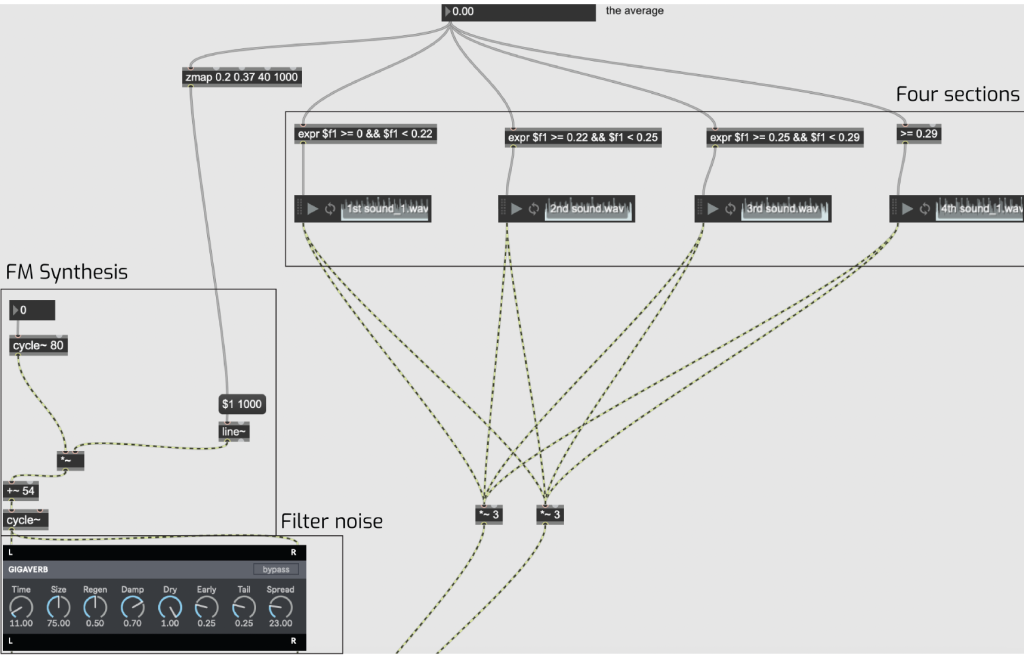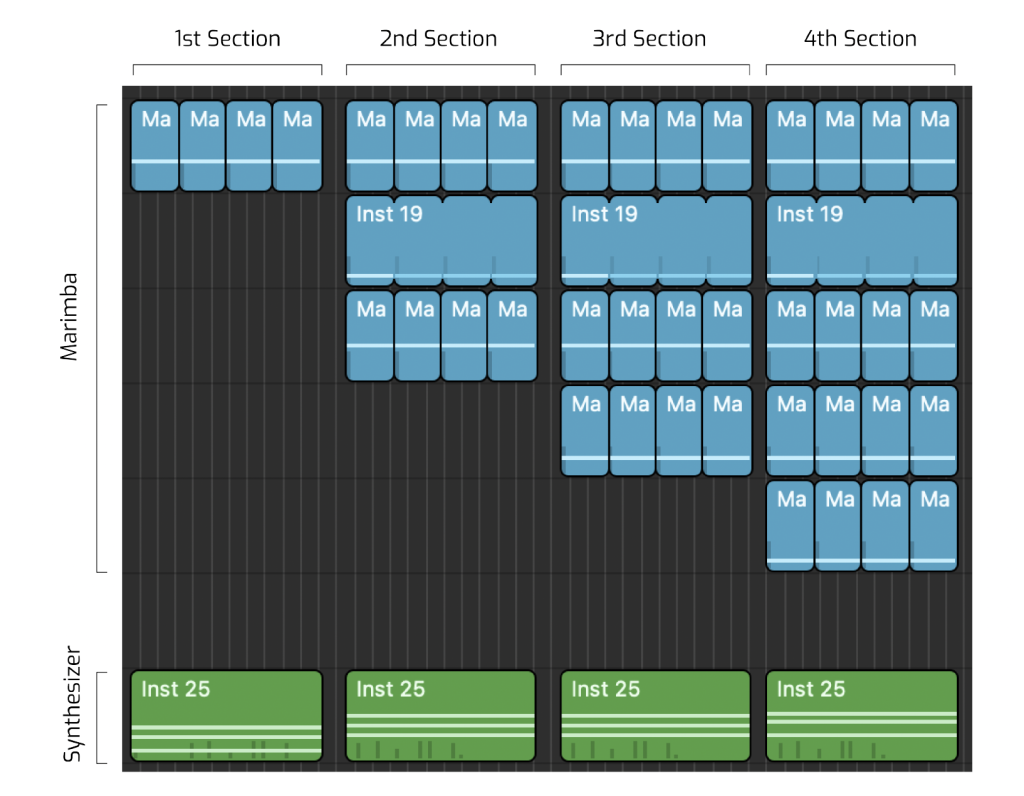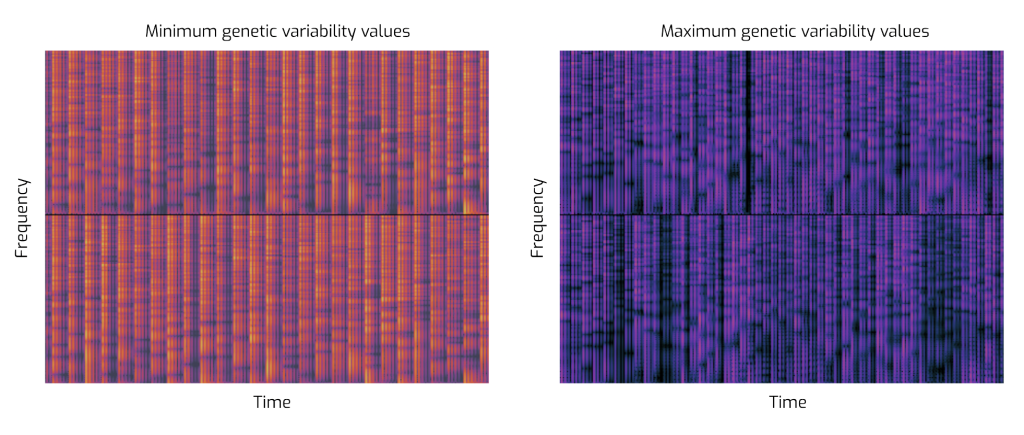Residency and co-production:
Sonification of Genetic Variability
In close collaboration with the project team, some artists were invited for an art residency to explore specific topics, informed by the scientific data. One of these explorations was the work of Clara Tapadas developed as part of her MA thesis (Master in Multimedia at the University of Porto).
Clara’s master thesis topic was “The sonification of genetic variability as a communication tool” by Clara Tapadas, with the supervision of Gilberto de Almeida Bernardes and Co-supervision of Nuno Miguel Gonçalves Mendes Ribeiro.
Acknowledging the expanding potential of sonification for converting diverse data types into auditory formats, this project delves into the use of sonification as a tool for communicating information. The project focuses on data collected from voluntaries, about their genetic ancestry, in the context of the project “Human diversity along the Magalhães circum-navigation space: genetics, history and culture”. The main goal was to represent the genetic variability among individuals from different geographical points related to Magellan’s expedition.
Thus, during her dissertation, Clara Tapadas sought to develop an innovative approach using sonification to communicate the comparison of individuals and effectively convey their genetic variability.
These audio explorations were hence integrated into the exhibition “A Journey Through Human Genetic Diversity”.
The piece “Sonification of Genetic Variability” starts from individual data of genetic profiles (about 1 million variants) of 15 individuals, from 5 geographical points. The analysis focuses on the 0.1% differences between human beings. Today we know practically all the places where it is likely that two individuals may have a different base. Therefore, to characterize their ancestry, it is not necessary to sequence the entire genome, but rather to characterize which bases are present in these variable locations.
Through musical translation, we can sonically perceive the analysis of genetic variability. The adopted sonification method was audification, in which the results of the specific genetic data of each individual are compared. The level of genetic variability is symbolised across the sound spectrum whenever we compare two individuals. Lower values of genetic variability are represented by low-intensity sounds; conversely, higher genetic variability translates into more intense sounds, accompanied by a faster rhythmic pattern.
Furthermore, this work was the basis for an app exploring genetic variability between individuals, that includes further information about the project, human genome, human genetic diversity, the history of human migration across the globe and Magalhães and Elcano’s voyage.




